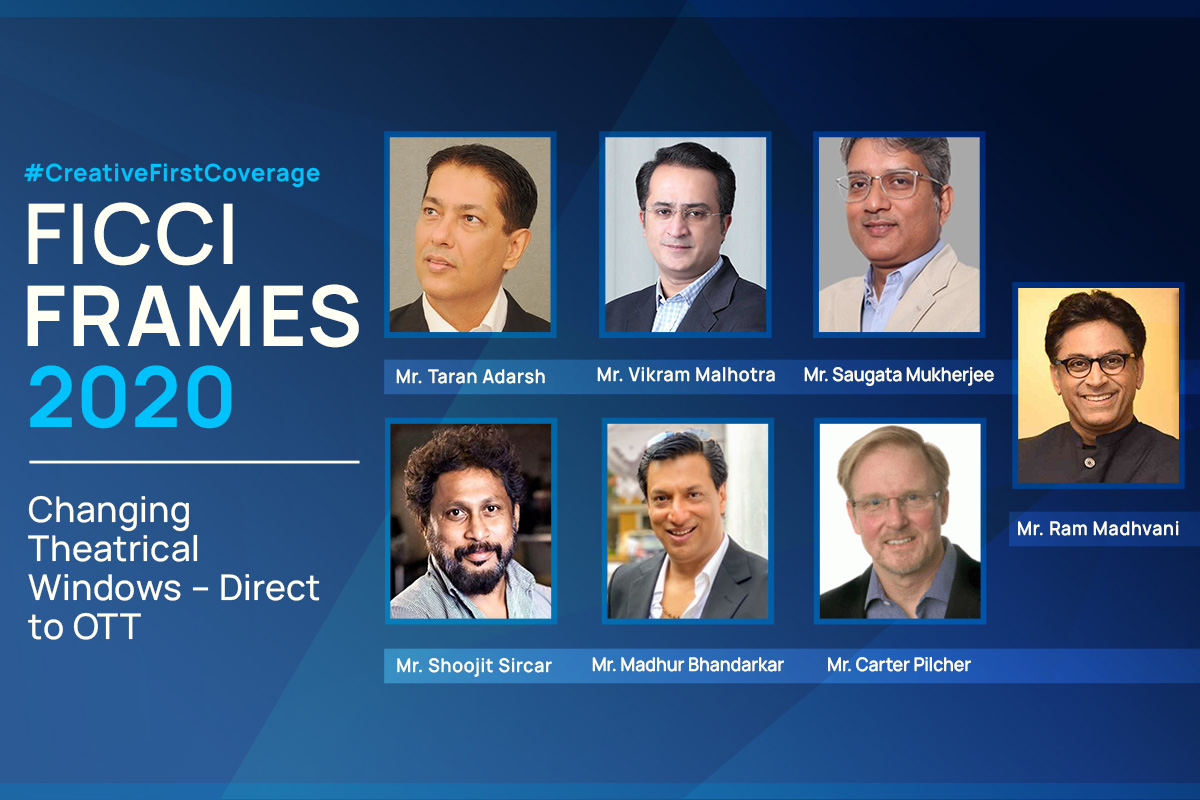
“An online platform takes the film where the audience is and serves the passion to get our production before our people and not get pushed back in the pipeline.”
-Mr. Vikram Malhotra, Founder – Abundantia Entertainment Pvt Ltd
The release of Shoojit Sircar’s film Gulabo Sitabo on a streaming platform was a watershed moment for the film industry. Multiplex chains PVR and INOX heavily criticised the decision to theatrical run of the film, which starred top drawer actors like Amitabh Bachchan and Ayushman Khurrana.
To discuss this development, stakeholders from media and entertainment sector sat together at E-Frames 2020 to discuss whether OTT platforms and movie theatres can co-exist. Participants included Shoojit Sircar, the director of Gulaabo Sitaabo, Vikram Malhotra, Founder Abundantia Entertainment Pvt Ltd, Mr. Saugata Mukherjee, Head of Original Content – SonyLIV, Mr. Carter Pilcher and Chief Executive Officer – Shorts TV, UK. Film directors Madhur Bhandarkar and Ram Madhvani were also part of the panel, moderated by journalist Taran Adarsh.
Impact of COVID19 on theatrical release
The panellists welcomed the positive response to the release of Gulabo Sitabo and hailed it as a successful experiment. Mr. Malhotra said that online platforms help take the film where the audience is.
For example, Gulabo Sitabo got access to 200 markets at once.
The move also make economic sense as films can be released on time and everyone in the value chain can be compensated without delay.
Mr. Sircar agreed with Mr. Malhotra and said that deferring the release of Gulaabo Sitabo until August would have led to uncertainties and losses. He gave the example of Angrezi Medium, which ran only for three to four days before a complete lockdown was imposed. He added that this concern got pronounced for those who make one film at a time and channel the profits from one production to the next. In contrast, directors who make multiple films simultaneously have the flexibility to delay a particular release.
Advantages of release on OTT platforms
Mr. Mukherjee added that globally big films are now launched on OTT platforms. These have opened up a new form of distribution and for certain films, OTT will be the first window.
Mr Madhvani added that OTT was benefitting both filmmakers and audiences. The former can time their releases and the latter can watch movies they like, at their own convenience.
Unlike theatrical releases, where a single Friday can determine the fate of a film, online platforms offer a way for continuing the life of a movie. Filmmakers get more creative freedom and there are no compulsions to marketing songs to promote a movie.
Popular genres and relevance of star cast
Mr. Mukherjee pointed out that recently thrillers have done well on OTT platforms. He warned against “over indexing” a particular genre because other genres haven’t been tried much and, therefore, the statistics might be misleading. Mr Carter explained that in the US, it is family animation that is most successful. Moreover, the popularity of films is director-led. On the contrary, Mr. Malhotra explained that in India, familiarity with a star offers reassurance to the audience and attracts fans. Mr. Carter pointed to the success of Whiplash and Mr. Mukherjee agreed with him that OTT services provide the chance to experiment with, and create, new talent.
OTT and theatres can coexist
That said, the panellists agreed that this is not a new normal but a pandemic-induced situation. The decision to use online platforms is a tactical one until movie halls reopen. Mr. Mukherjee said that the industry will continue to make films suited for both, as some films are better suited for theatrical experiences.
Mr. Carter, suggested a revenue sharing model between theatres and OTTs as a solution to keep the theatres alive.
Key takeaways